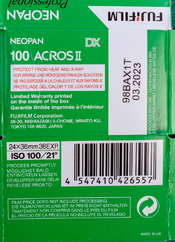My post #19 discusses how to avoid confusing fixer and developer solutions, but proper labeling is no help if my developer is "dead" (totally inactive).
Because I often use Xtol, which does not change appearance when it goes bad, another habit I have formed is to do a quick check for developer activity before processing.
When loading the film onto the reel, I cut off the tapered film leader. Before processing, I use part of the film leader to do a spot clearing time test to verify fixer activity, and I also dunk part of the leader in my developing solution to be sure it is still active.
Rodinal is known for having a long shelf life, but I don't know if it dies suddenly (like Xtol can), or if it would be more likely to die slowly - still having some residual activity. In other words, I think the next step for troubleshooting would be for
@MFstooges to verify that his Rodinal is still active. If it is, then that would suggest fixing-before-developing as the most probable cause, right?











